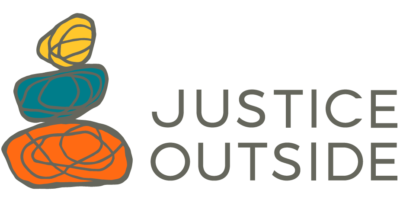Indigenous people in the United States and around the world have been leading environmental conservation since time immemorial. We act in solidarity in calling for decolonial justice and healing, recognizing that many of us occupy native land and environmental justice must center the demands of earth’s traditional caretakers. We must foster solidarity with Indigenous peoples and reconcile our histories in the cities and neighborhoods we live in.
It’s key for non-Indigenous people who care about racial justice and environmental protection to find out which Indigenous territory they are living on. This website shares information about the traditional territorial names and tribal lands, the languages traditionally spoken, and treaties. It also features links to the websites of local Indigenous nations, tribes, organizations, trusts,and cultural and educational organizations around the country that we can support in a variety of ways and learn from.
For example, this tool will inform users that Justice Outside’s office is on Ohlone territory, traditionally known as Lisjan and now more commonly referred to as Oakland, California. It will also direct you to a link to Sogorea Te’ Land Trust, which is an urban Indigenous women-led land trust based in the San Francisco Bay Area that facilitates the return of Indigenous land to Indigenous people and with whom we can work to be in solidarity through Shuumi.
It is vital that we take the time to learn more about national campaigns led by Indigenous peoples, such as the Land Back movement led by the NDN Collective (NDN), which draws a clear correlation between the return of land to its original caretakers and healing for people and the planet. NDN’s Climate Justice and Racial Equity Campaigns clearly articulates the ties in their memo between the climate crisis, colonization, white supremacy, capitalist extraction, and the Missing and Murdered Indigenous Women and Relatives (MMWI+) crises. For example, the ways that capitalism as a colonial construct continues to wreak havoc on the planet and people is evident in the environmental damages extractive industries, like oil extraction and refining bring to the land, and the people in surrounding communities. Additionally, the memo outlines how the addition of a temporary, cash-rich workforce near Indigenous communities like those brought from oil extraction and other mining activities increase the likelihood that sex trafficking and sexual abuse occur. Indigenous women are made even more vulnerable to harm when they are low-income, homeless, have been denied resources, suffer from addiction, and/ or experience other factors often found in resource neglected communities, like tribal communities and reservations. The robbery and exploitation of the land is the tip of the iceberg that allows for greater harm to take place on stolen land.
Given these inextricable simultaneous colonial crises that occur on the land, Jessica Hernandez, a transnational Indigenous scholar, scientist, and community advocate, proposes our movement toward “healing landscapes” centering the notion that the land must be returned to Indigenous caretakers in order for the environment and the life it hosts to truly heal. She highlights the importance of kincentric ecology, in which humans are seen as a part of “nature”, rather than separate, and affirms the value and relevance of Indigenous science (commonly referred to as Traditional Ecological Knowledge or TEK) in environmental efforts. She invites all people occupying Indigenous territories that are not theirs to build relationships with both the land and Indigenous communities that house them.
As we take these steps to decolonize our environmentalism, we may confront eco-anxiety and other difficult and heavy emotions; mourning is natural. But Indigenous leaders globally, from climate activist Laetania Belai Djandam, a member of Indonesia’s Dayak people, to Nahuatl journalist Miryam Vargas from Mexico, emphasize that joy is an important part of motivating and sustaining their work.
“There’s this notion that activism can’t go hand in hand with happiness, that we have to be serious all the time, and I think activism goes hand in hand with joy,” Djandam shared. “You have to make sure to find the joy in the work you’re doing. Joy doesn’t betray activism, but sustains it.”
Justice Outside remains committed to uplifting and centering Indigenous leadership and knowledge as we fight for racial justice and equity in the outdoors. We are proud to support Indigenous organizations such as Alliance for Felix Cove, Indigenous Food Sovereignty at Tamien Nation, Sogorea Te’ Land Trust, Wicahpi Koyaka Tiospaye, Ambassadors for Land Conservation – (Center for Native American Youth), Exploring Our Coast: Marine Science and Native Cultures, Indigenous Cultural Concepts, Sustainable Housing Initiative, Pueblo Action Alliance, Puyallup Tribe Culture Department, Ṣu:dagī ’O Wud Doakag (Water is Life), Taos Pueblo Conservation Corps, Tutskwat Öqawtoynani, Uplift, Bueno Para Todos Farm, Divest, Invest, Protect,Diné Nihi Kéyah Project, CESOSS (Center for Social Sustainable Systems), Sacred Places Institute for Indigenous People, Native Like Water, Ireta P’urhéphecha, Wa-Ya Outdoor Institute, Coastal Defenders, Hunters of Color, and Maqlaqs Paddle through our Liberated Paths Grantmaking program.
We believe in the restorative power of grantmaking and the integrated nature of our work for liberation for all communities impacted by white supremacy and environmental degradation. We hope you will join us in following and supporting these organizations.
Featured photo depicts a person facing a body of water, with the back of their shirt reading “REMATRIATE THE LAND” and has been used with permission. You can learn more about Sogorea Te Land Trust‘s work here and follow them on Facebook here.

